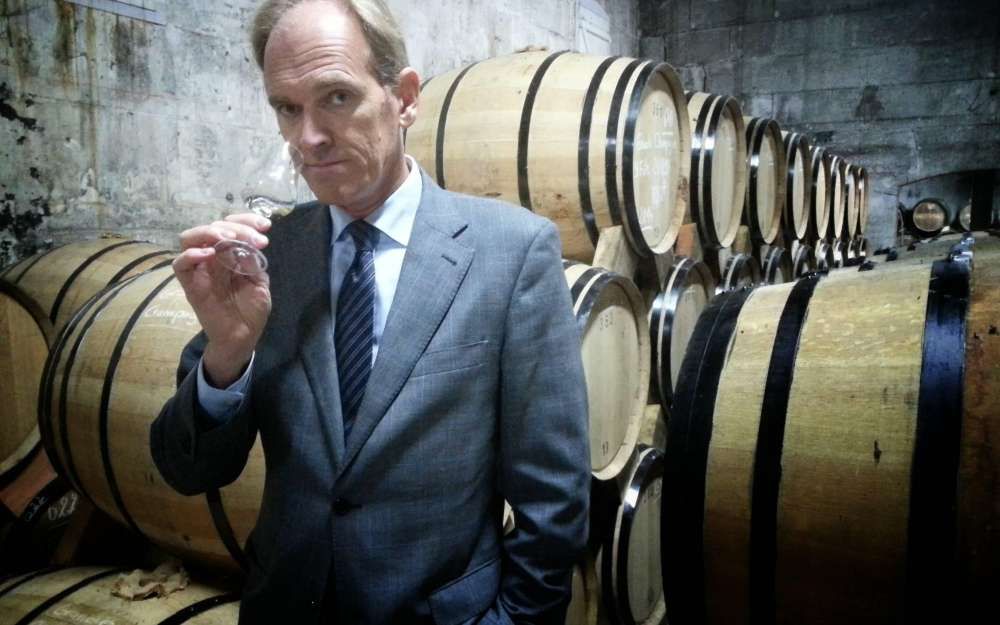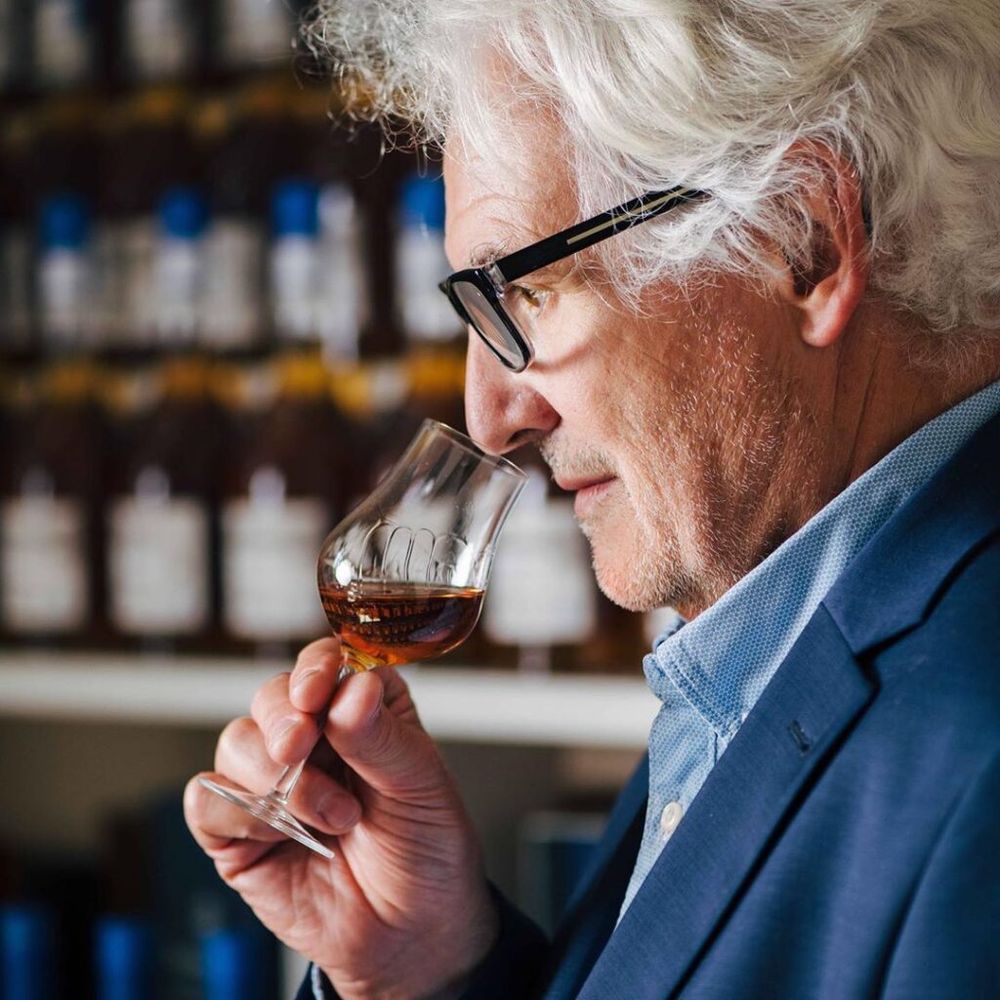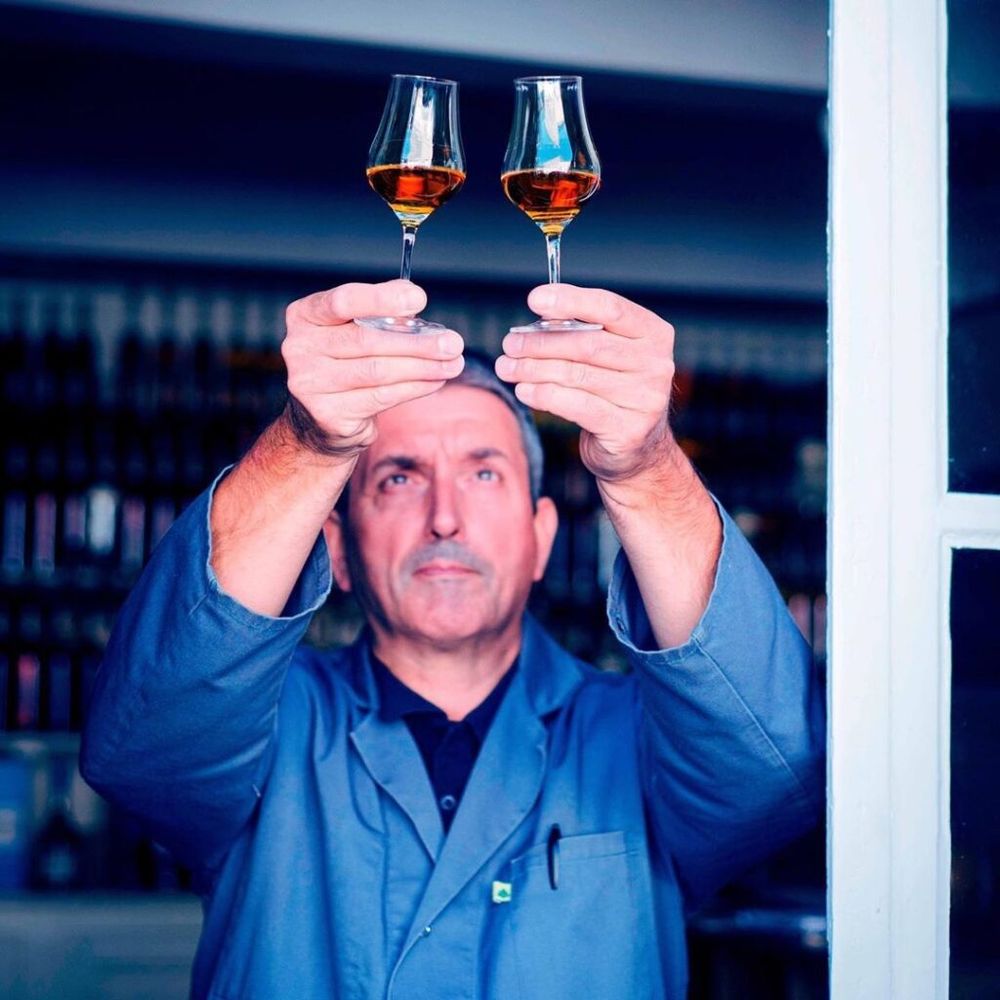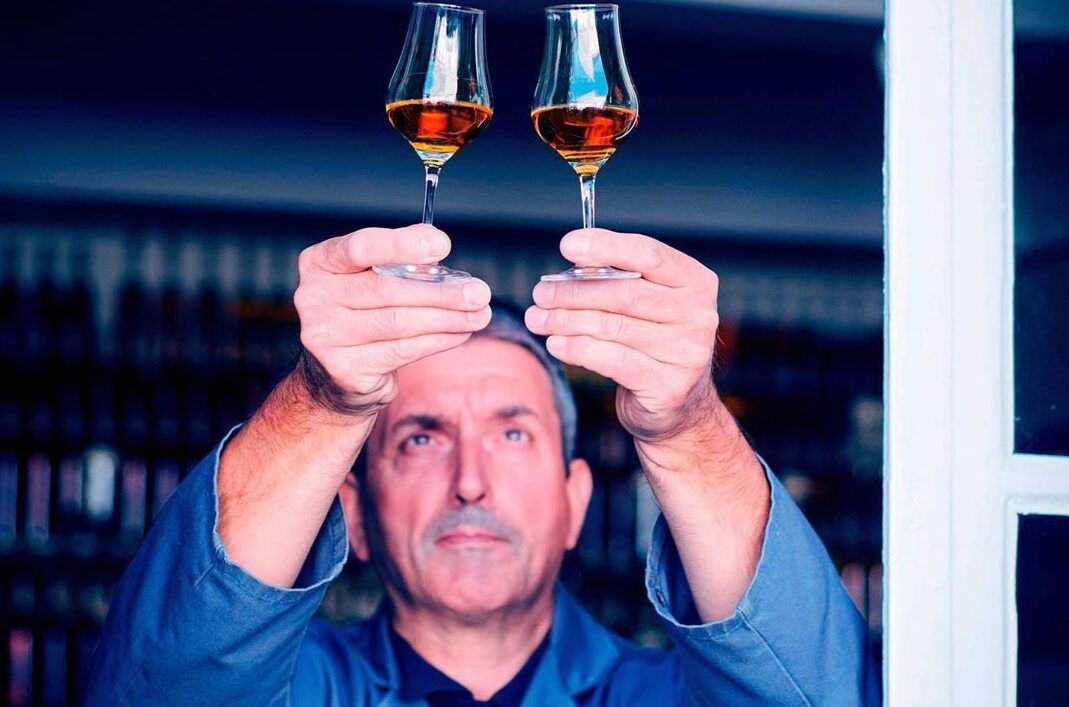Delamain Pale & Dry XO Centenarie has had a format change – from 70cl to 50cl – to encourage people to trade up to XO.
They say you should never change a winning formula so the dilemma this year at Delamain Cognac when it came to celebrating 100 years of its iconic Pale & Dry XO Cognac, was how to re-align it for another century of drinkers, without changing it just for the sake of it.
Charles Brastaad managing director and ninth generation of the Delamain family explains that there was no need to change a lot and calls this re-orientating for the next century an evolution not revolution.

Charles Brastaad
“We thought long and hard about how to celebrate Pale & Dry’s centenary, we did not want to have a new taste or any gimmicks, and ironically having spent time re-visiting its roots and the ethos of its creators we have become very comfortable with the notion of change within the construct of Pale & Dry as it currently exists.”
Delamain’s house style is terroir-based, trying to be the purest expression of Grande-Champagne, and allowing that fruit to shine through without being masked by wood or sugar. In fact, the insistence on zero added sugar or colouring was directly linked back to the cognac’s origins, as an ‘ode to nature’ resulting from the First World War.
“Pale & Dry was very much a reflection of that transformative post-war period, and of the Delamain brothers’ experience of war and the blend of euphoria and relief given the chance to return home and to the family business. Upon his return to Jarnac after the war, Jacques Delamain attributed his ability to survive his time in the trenches to the sound of birdsong. That persistent and insistent sound of nature, even in the darkest of places and of times led him to a lifelong passion for birds and for nature (he wrote several books including “Pourquoi les Oiseaux Chantent”).”

Delamain only ever uses older cognacs to reduce alcohol levels and not water
“Pale & Dry was born of the hope that emerged after despair and embodied the spirit and hope of a blossoming new age. Jacques and Robert’s liquid ode to light and nature defied convention with its ethereal lightness and elegance. It was an homage to the spirit of the time, progressive, authentic, pure, honest and excellent. It was an early harbinger of the joie de vivre that would mark the Roaring Twenties, but its origins are really more simply about a pursuit of nature’s essence and the beauty and the joy and the hope that could be found in nature in its purest forms if one really listened,” Brastaad says.
So what has actually changed?
The key decision was to change the intensity of the spirit – increasing it from 40% abv to 42% without changing the flavour profile. The new strength it is argued shows better intensity and allows the natural sweetness to come through on the palate.
Delamain’s small team of 20, under the watchful eye of chef de cave Dominique Touteau, decided to do the blend earlier, then put it back into their humid cellars in small barriques. As with all their blends it does not use colourings or sweetener, and it uses older cognacs to reduce alcohol levels and not water as is customary in some other houses.

Chef de cave Dominique Touteau
“In our new interpretation of Pale & Dry, the aromas and flavours of this iconic cognac are intensified – it is still very recognisably Pale & Dry with the same citrus notes and vanilla and its signature mouthful of dryness,” Brastaad says.
Another interesting change is reducing the format size from 70cl to 50cl in order to fit in with how the cognac market is changing, and to try and encourage customers to buy XO.
“We wanted to make sure that an haut de gamme cognac is accessible in a spirits market where connoisseur offerings can run the risk of being priced beyond the reach of new drinkers. At Delamain we would like every new drinker’s introduction to cognac to be at an XO level, and the 50cl format allows us to maintain an accessible price point. There is a less-is-more message, combined with quality and rarity.”
Keeping a vertically identical cognac over 100 years has taken “enormous energy, resources and commitment,” says Brastaad, who adds that there has probably been much greater change in the consumer, than in their liquid.
“Most of the change we have seen has probably occurred over the last 10-20 years and we‘re still in that period. As markets have developed, the sophistication and curiosity of drinkers has changed, there is an appreciation for products that have an integrity and a commitment to nature, and there is a connoisseurship which stretches way beyond the traditional male drinker,” he adds.

The house accepts there will be a small degree of variation in the lightness of the spirit year in year out
“Cognac is benefitting from an explosion in the spirits market generally. Drinkers are more aware of the context in which they drink, people talk about the experience of drinking, exploring food pairings, and it is not so much about alcohol but more about the shared sensory experience of drinking, in the same way that we approach gourmet foods.”
So where does he see the cognac drinker developing in the next 10-20 years?
“I think we will move away from the solitary experience of the fireside armchair to the more everyday social home experience… cognac will hopefully be less reserved for exclusive social and professional occasions and more interwoven into everyday eating and drinking,” Brastaad says.
Regarding food pairing, Dominique Touteau adds that, in his experience, Pale & Dry works best with trout carpaccio, really mature cheddar and crème brulee and not just as a traditional digestif.
Brastaad continues: “As for cognac markets in general there will probably be a continuation of the currently strong markets, such as Asia and the US. That said, for a connoisseur house such as Delamain, we don’t look at markets in quite the same way as the big four houses, we can’t sell vast quantities of cognac, and with our targeted approach we are looking to develop a particular kind of exploring, curious drinker.”
“Cognac drinkers have a tendency to ‘evolve’ towards more sophisticated products over time (this is especially true in emerging markets) but it is still generally true in all markets. People move towards a perception of quality, and implicit in the sense of quality is always value. Connoisseur cognacs are therefore in a good place to capitalise on drinkers who are fairly far along on an evolutionary spectrum. We can find ourselves with a particular strength in a certain market, such as of course in the UK, but it can happen anywhere, and we have to be ready to address the needs of a Delamain drinker.”

So once a sommelier has tried it and is offering it to a customer how would Brastaad like them to describe it?
“It is sleek, elegant and ethereal with wonderful citrus and vanilla notes, and an incredibly long dry finish. It is the essence of what a fine cognac should and can be, with the combination of the finest terroir, centuries of commitment and wisdom and the time necessary to achieve its full potential. It is a classic.”
So how does the new spirit taste?
Delamain’s Pale and Dry XO Cognac Centenaire
On the eye it is light to mid gold, with an orange/ light brown hue; the nose is elegant, with fruity notes of raisins, vanilla pod, apricot, grapefruit, citrus, fresh fig, a little rancio and leather; the front palate is light, naturally sweet, intense flavours of apricot, dried fruits, tingly on the tongue and then finishes with a lovely dry, smooth, long length. Just so light and smooth in the mouth.
Delamain Cognac is sold and distributed in the UK by Mentzendorff, which is a partner of The Buyer. You can find out more about the company by clicking here.










































